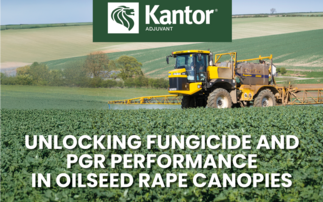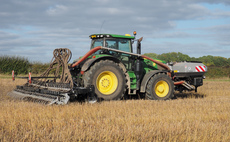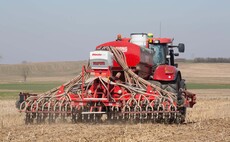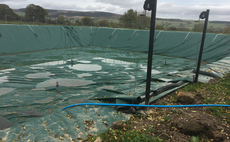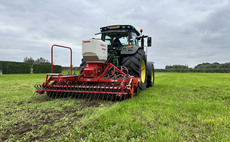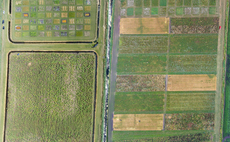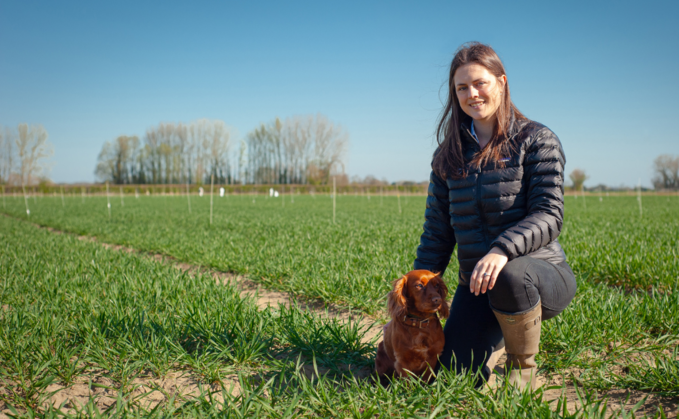
Correct application is fundamental for herbicide performance. If the chemistry doesn't reach the target, it will not control weeds. Success depends on understanding how the interaction between timing, conditions and technique contributes to weed control, as Bayer Technical Manager, North, Emma Jones explains.
With pre-emergence applications in cereals, neither the crop nor weed has emerged. You need to assess the weed threat based on field history and the cultural controls used up to the point of drilling. Unlike contact-acting herbicides, residuals become part of the soil chemistry before uptake, so you need to consider soil conditions as well as weather at the point of application.
Timing
Applying within 48 hours of drilling at the true pre-em. timing gives the most reliable weed control. At later timings, results are more variable, but it does depend on the product. Metribuzin co-forms like Alternator® Met, Cadou® Met and Octavian® Met tend not to have huge differences in control between pre-em. and peri-em.
For earlier drilled crops, pay attention to soil moisture which is needed for weed germination. If you apply before conditions are right for germination, then the chemistry will degrade in the soil losing potential to control weeds. Once conditions change and weeds start to emerge, the herbicide programme has already lost some of its punch.
In this situation, a later first application to control weeds when moisture arrives could make sense. However, this is very much the exception and only relevant in very dry years. Spring and summer this year certainly were dry but rain in September has improved the situation, but it does vary by location.
If you're concerned about it being too dry for pre-em. efficacy, then you have to ask if it is too dry to drill anyway. Crops need moisture for establishment, but I understand workload might mean some crops are drilled in expectation of rain rather than into an ideal seedbed; think carefully about herbicide application strategy in these situations.
Soil conditions
Soil moisture enables actives like flufenacet and metribuzin found in metribuzin co-forms to move through the soil profile to the roots of germinating weeds.
The best pre-em. programmes have a mix of root and shoot activity. That is why we recommend a metribuzin co-form plus Proclus®. It contains four different modes of action, two root acting and two shoot acting. The aclonifen in Proclus is not as reliant on soil moisture as other chemistry so it is a ‘must have' if you have any concerns around dry weather at the point of application.
Proclus also has good persistence and provides protection for several weeks after application. Many farmers will intend to go back with a top-up, but we all know that autumn weather can disrupt the best laid plans so it's useful insurance to apply it at pre-em.
For optimum efficacy of Proclus and other surface acting chemistry, pay attention to the seedbed. An even surface, free of clods, allows the chemistry to form a protective film across the entire field so any weed shoots that start to emerge take in a dose of herbicide. Rolling after drilling but before spraying can help break up clods and improve seedbed condition.
Sequences and Safety
Residual programmes have become more robust to manage difficult black grass and Italian rye-grass populations. As a result, more attention is needed to ensure crop safety. For soil mobile actives, safety depends on physical separation of the crop seed from herbicides. Incorrect drilling depth and poor soil coverage both increase the risks.
For Bayer herbicides, the labels advise at least 32mm drilling depth into a fine, firm consolidated seedbed. Other herbicides have similar recommendations. Applying herbicides in a sequence rather than a very large pre-em. stack is a sensible precaution where safety is a concern, particularly on lighter soils and if heavy rain is forecast.
With a sequence you can also assess crop quality and condition before investing more in the crop. If this is your thinking, you can't skimp too much on the pre-em. Firstly, because it is usually the most effective timing. Secondly, because there is the risk you can't get back for the second application.
A metribuzin co-form plus Proclus is a strong start. You can then come back with different chemistry for the second application. For black grass control a tight sequence with a pre-em. followed by a peri-em. usually has the best efficacy. If crop safety is a concern; however, it is better to wait until the crop has two true leaves.
Technique
First of all make sure the sprayer is calibrated and correctly maintained so it works as intended. When you apply, the aim is for even coverage across the field. Underdosing areas can give an opportunity for weeds while if you overdose then it can affect crops.
Apply residual herbicides at 10–12 km/hour, this helps ensure boom stability and means you can set the height to 50cm above the soil surface. A water volume of 200l/ha is a sensible starting point to balance coverage and work rates.
Cutting rates very low to increase work rates runs the risk of poor coverage. Nozzle choice is important too; drift-reducing nozzles, for example, produce a coarser spray hence need a greater water volume. Angling nozzles is another potential marginal gain that can help improve coverage in rough, cloddy seedbeds.
Alternator® Met contains metribuzin, flufenacet and diflufenican. Cadou® Met contains flufenacet, diflufenican and metribuzin. Liberator® contains flufenacet and diflufenican. Octavian® Met contains metribuzin, flufenacet and diflufenican. Proclus® contains aclonifen. Alternator®, Cadou®, Octavian® and Proclus® are Registered Trademarks of Bayer. Use plant protection products safely. Always read the label and product information before use. Pay attention to the risk indications and follow the safety precautions on the label. For further information, including contact details, visit www.cropscience.bayer.co.uk or call 0808 1969522. © Bayer Crop Science Limited 2025.










